This site uses only a few technical cookies necessary for its operation. By continuing to browse, you accept their use.
To find out more...
To find out more...
Oven height
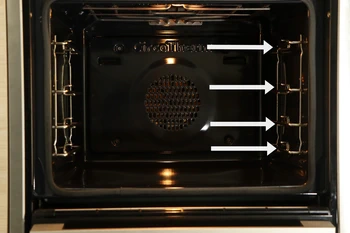
When we put a dish or cake in the oven, we naturally tend to put it on the middle shelf, and that's what we usually do.
But in some cases, this position and height can be a little tricky, so let's find out why.
But in some cases, this position and height can be a little tricky, so let's find out why.
2,490 5/5 (3 reviews)
Keywords for this post:OvenBakingDosageHeightRackHearthLevelsLast modified on: October 8th 2025
Oven height

First of all, it's worth noting that kitchen ovens all have the same square shape, with the roof and grill at the top, and the hearth at the bottom.
Between the two, there are a number of positions, or levels, usually 3 or 4, into which a grid can be inserted, allowing you to choose whether you want to bake in the middle, or towards the top or bottom.
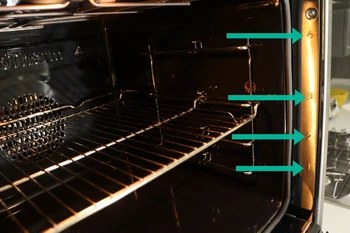
These positions are often numbered, from 1 (lowest) to 4 (highest) on the side of the oven entrance.
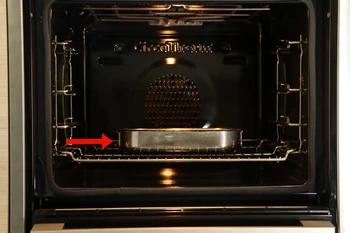
Bottom in oven (1)
This is the lowest position in the oven, bringing the underside of your dish closer to the heat coming from the oven hearth.
You want the heat to come from the underside of your dish, because it needs to cook more from below.
This is the case, for example, with tarts/dishes with puff pastry in the bottom, which need a lot of heat to cook properly.
You may also need to move the top of the dish away from the heat of the vault, to prevent it from coloring too much or even burning, and here too you position it low in the oven.
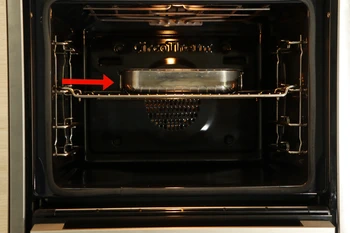
In the middle (3)
This is the standard baking position, where your dish or mold is placed at roughly equal distance from the hearth and vault, and baking is not accentuated either above or below.
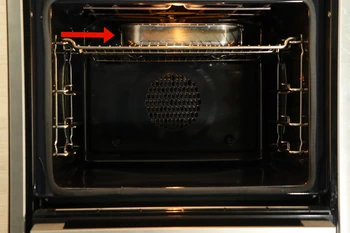
Top of the kiln (4)
This is the highest position in the oven, bringing the top of your dish closer to the heat coming from the oven's vault, or perhaps even the grill.
You do this when you want to get the best heat from the top of the dish, for au gratin for example.
You may have noticed that I didn't mention position 2, as it's an intermediary between 1 and 3 (of course), and allows you to dose things down a little and do "not so low".
Some remarkable points
If we had to sum it all up, we could say that :- It's always interesting to play around a little with where the heat is going to come from to cook your dish, simply by positioning it in your oven.
- If you don't know where to position your dish, simply place it in the middle.
- If you're baking puff pastry, a thick cake, or anything else that needs to be cooked well on the bottom, put it on the bottom.
- If you need to brown a dish, put it in the top oven.
- There's nothing to stop you changing levels as you cook, finishing by raising a dish to bring it closer to the grill, for example.
To sum up: It's always a good idea to control the cooking time in your oven, by putting a dish in the oven at a higher or lower setting, depending on the type of dish.
Lasts posts
Butter vs. grease
We often read in a recipe where a pastry is put into a mould that, just before pouring, the mould should be buttered or greased. But what's the difference between these 2 terms?December 1st 20257085
Getting out of the fridge early
Very often when you're cooking, you need to take food or preparations out of the fridge, to use them in the recipe in progress. There's nothing tricky about this: you just take them out of the fridge and use them, usually immediately, in the recipe. But is this really a good method?November 24th 20259775
Who's making the croissants?
When you look at a bakery from the outside, you naturally think that in the bakery, the bakers make the bread, and in the laboratory, the pastry chefs make the cakes. It's very often like that, with each of these professions having quite different ways of working, but sometimes there's also one...November 23th 2025879
The importance of sieving
In recipes that use a fine powder (flour, powdered sugar, etc.), you'll often see the advice to sift before using it. To sift is to pass the powder in question through a sieve (a very fine strainer) before incorporating it into your recipe. It's often advice, but is it really useful?September 3rd 20257,3633
The grease spray
As soon as you have something in a recipe that sticks to the mold, the question always arises as to how difficult it is to remove from the mold. There's nothing more frustrating than breaking your cake when unmolding it, because part of it has stuck in the mold. The classic way to avoid this is...August 26th 20256,9175
Other pages you may also like
Butter vs. grease
We often read in a recipe where a pastry is put into a mould that, just before pouring, the mould should be buttered or greased. But what's the difference between these 2 terms?December 1st 20257085
Parsley stems
Parsley, whether curly or flat, is a delicious ingredient in many recipes, where it is used both raw and cooked. When used raw, in a salad for example, where it always provides, alone or with other herbs, a remarkable freshness, only the leaves are kept. And when used cooked?July 28th 20255,476 13
Getting out of the fridge early
Very often when you're cooking, you need to take food or preparations out of the fridge, to use them in the recipe in progress. There's nothing tricky about this: you just take them out of the fridge and use them, usually immediately, in the recipe. But is this really a good method?November 24th 20259775
The window-pane test in bread-making
The home bread-makers often ask themselves “Have I kneaded my dough long enough?” . A good question, as dough that is insufficiently kneaded will not rise properly or will fall flat when the top is slashed, which is very frustrating. To know when the dough is ready, one can rely on the length...June 16th 202196 K 23.9
A few tips for effective kneading at home
When you have to knead dough for bread or some other recipe, you may well use a food processor or the type of machine known as a stand mixer. The best-known brands are Kenwood and KitchenAid. They are useful tools, but here are a few tips to help you get the best out of them.June 23th 2021283 K 23.8
Post a comment or question
Follow this page
If you are interested in this page, you can "follow" it, by entering your email address here. You will then receive a notification immediately each time the page is modified or a new comment is added. Please note that you will need to confirm this following.
Note: We'll never share your e-mail address with anyone else.
Alternatively: you can subscribe to the mailing list of cooling-ez.com , you will receive a e-mail for each new recipe published on the site.







